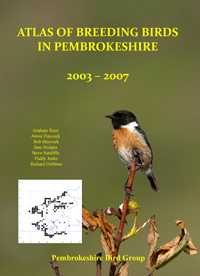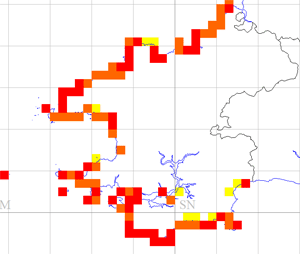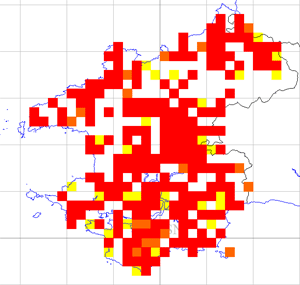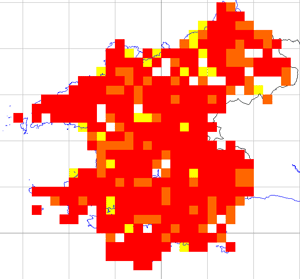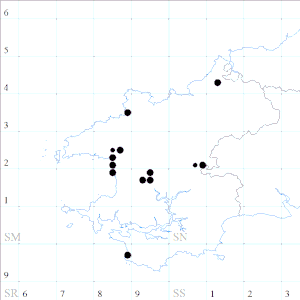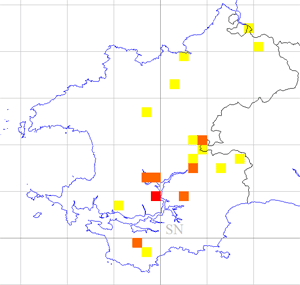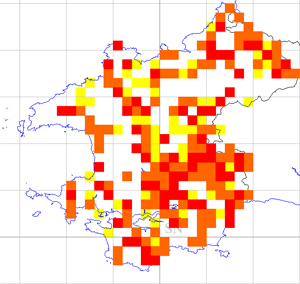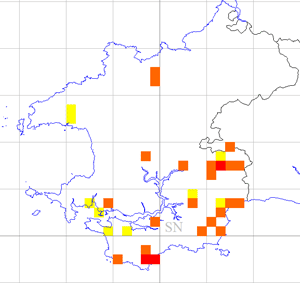Grey Wagtail - 2003-07
 Friday, May 11, 2012 at 9:27PM
Friday, May 11, 2012 at 9:27PM During the 1984-88 tetrad survey, Grey Wagtails were found to be widespread in Pembrokeshire, breeding on all major and many of the minor streams and rivers, from the Preseli Hills to the coast. The results of the 2003-07 tetrad survey suggest that they are still widespread in the county, although there have been some localised losses, e.g. parts of the Western Cleddau catchment area and from watercourses to the south and east of Haverfordwest. Gains have occurred in eastern parts of Pembrokeshire and in one or two tetrads in the west of the county. The data also indicate a 31% increase in the number of tetrads where breeding was confirmed, and a 12% increase in the number of tetrads where breeding was probable. The BBS index suggests a population change at UK level between 1994 and 2007 of +26%.
In general, Grey Wagtails appear to be doing well in the county, possibly reflecting the recent trend towards milder winters which will have helped to improve and maintain winter survival, hence recruitment to the breeding population. They are sensitive to prolonged spells of cold weather, although population crashes are usually followed by quite rapid recovery. Other factors that are likely to influence Grey Wagtail breeding populations include water quality and the management of watercourses and associated vegetation by the sides of the banks. Operations such as the removal of gravel shoals could be detrimental, as could clearance of mature bank-side vegetation.
Following the 1984-88 tetrad survey, the breeding population was estimated to be around 450 pairs, based on an average of four pairs per tetrad. An estimate of the breeding population following the 2003-07 tetrad survey would probably be very similar, i.e. around 450 pairs.
Jane Hodges
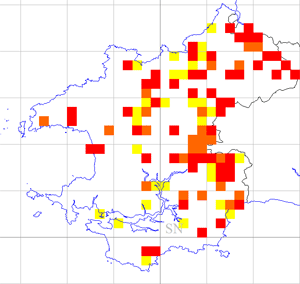
Fieldwork 2003-07 (based on 490 tetrads)
Red = breeding confirmed = 58
Orange = breeding probable = 24
Yellow = breeding possible = 32
Total tetrads in which registered = 114 (23.3%)
 JEH,
JEH,  PBBA 2003-7 in
PBBA 2003-7 in  Grey Wagtail
Grey Wagtail 